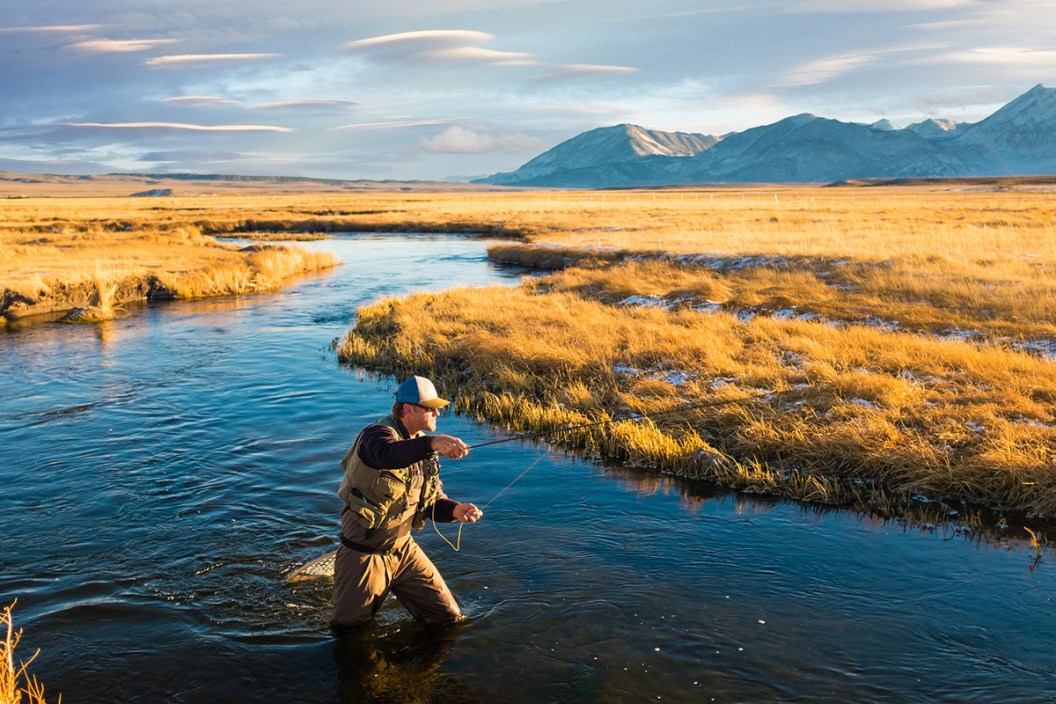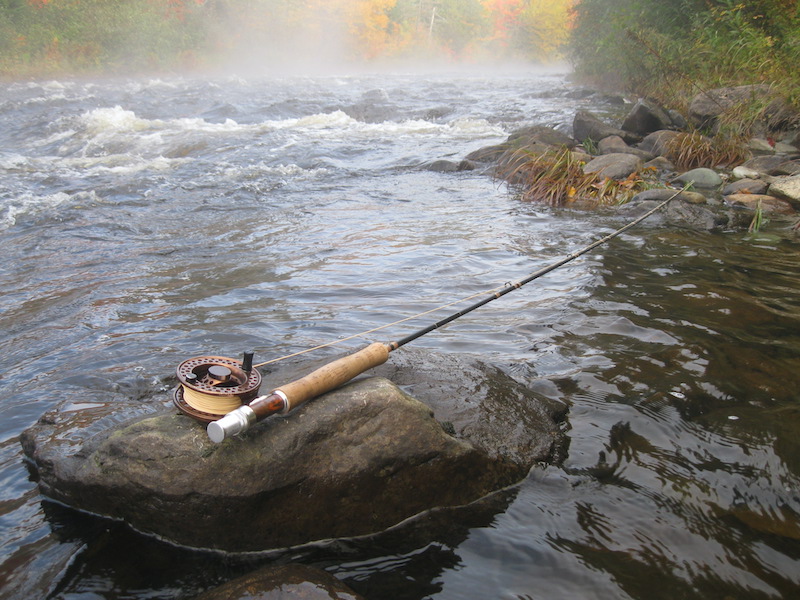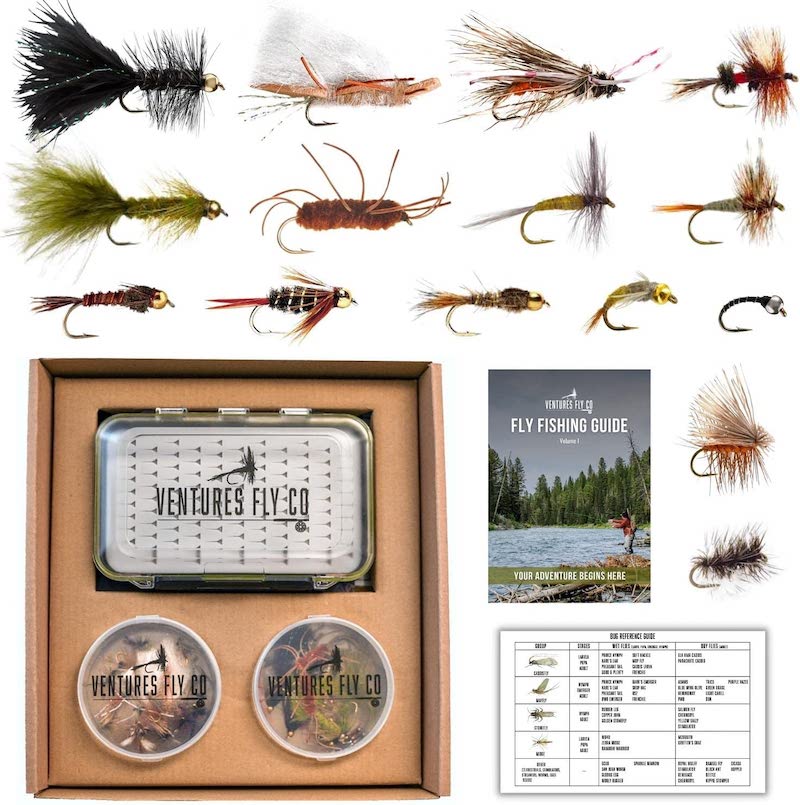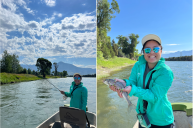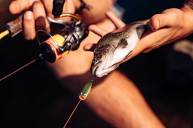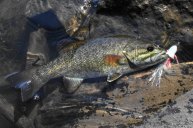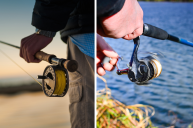Fly fishing for beginners all starts with the essential gear. Sure, as a new fly fisherman, you'll definitely have to learn the basics of casting. But starting out as a novice also means looking into the fishing gear you will need: a rod and reel combo, line, and a leader. And all of these require a decent understanding of sizes and weights.
We know—it's not as fun as picking flies, stream locations, or actually getting out there. But learning the basics of fly fishing gear will make your days on the water much more successful. Here's what you'll need to get started fly fishing:
Fly Fishing Rod and Reel
Okay, we know this is fly fishing for beginners, but we have to get a little technical for a minute: Fly line weights correspond with fly rod weights to make it a simple task to match your line to your rod. Since all of the fly line manufacturers list the line weight right on the package, it's simple to match it to your rod.
Reels aren't listed by weight but are obvious in their usage. For example, a standard fly reel is designed to work with virtually any rod, but be sure it isn't one of the very large saltwater versions.
Getting your hands on a good fly rod and reel combo may just be the best way to get started in fly fishing for beginners since they will be immediately paired for use by the manufacturer. If you have your own rod of choice already, it'll work fine to be coupled with a personally chosen reel as long as you do a little homework.
The best starting rod (and line) weight usually begins around the 5 wt. mark since this size combo works well for beginners, can catch a wide range of gamefish, and is suitable to cast everything from nymphs and dry flies to smaller versions of bass poppers and streamers.
The Best Fishing Rod and Reel Combos:
Flyline, Leader, and Tippet
Fly line isn't cheap, but it does last much longer than conventional fishing line, so we highly recommend starting with a quality, name brand fly line to start your fly fishing experience off right. There are differences that you will need to learn, like the contrast between floating fly line and sinking fly line, with most casual fly fishing enthusiasts opting for the floating version.
Leaders are the section of material (the best being flurocarbon) that attaches to the fly line which you tie your fly to. Tapered leaders have a thicker end which is tied to the fly line and decreases in size as it gets closer to the fly. These are necessary items of fly fishing gear and range in price from around $10 to $30-plus, depending on size and use.
There are multiple reasons the fly angler might want to use a tippet. This is, essentially, a section of lighter line (usually fluorocarbon or mono) attached to the thinnest end of your leader, mainly due to multiple flies being tied on, cut off, and retied. A tippet will need to be physically tied onto your leader via a double surgeon's knot or the Orvis tippet knot.
Popular Lines and Leaders:
Flies
Now, you are going to need the most important (and fun) fishing tackle of all: the flies.
There are two basic fly fishing flies: those that float on the surface (dry flies) and those that sink (wet flies), like nymphs. As you might imagine, there are many choices of fly fishing flies, both dry and wet, enough so that an angler can make a lifetime out of choosing or using them all.
Popular dry flies:
- Parachute Adams
- Deer Hair Caddis
- Black Ant
- Stimulator
- Royal Coachman
Popular wet flies:
- San Juan Worm
- Copper John
- Bead Head Pheasant tail
- Blue Wing Olive
- Zebra Midge
Waders and Boots

Getty: DieterMeyrl
If you're planning on fishing in a northern stream where the water will be particularly cold during the peak of fly fishing, you're going to want to access the prime spots without freezing to death. That means you're going to want to purchase a high-quality pair of waders or wading boots.
You essentially have two options: Buy a pair of waders with boots attached to them already or buy a pair of waders with socks attached and then you can easily slip into separate boots. While the latter is typically more expensive, advanced fly fishermen typically lean toward these "stockingfoot waders," whereas novice fly fishermen looking for simplicity (and budget) tend to go for "bootfoot waders."
Either option is more than adequate as long as you're willing to spend enough for a quality pair. We've listed a few popular options below.
Bootfoot waders:
- Orvis Clearwater Bootfoot Waders
- Simms 2021 M's G3 Guide Waders - Bootfoot - Felt Sole
- Cabela's Classic Series II Neoprene Boot-Foot Waders
Stockingfoot waders:
- Orvis PRO Waders - Short
- Simms Freestone® Waders - Stockingfoot
- Patagonia Swiftcurrent™ Ultralight Waders
Wading Boots:
Once you have the basic fishing gear covered and you've had a chance to go out and realize that fly fishing is one of the greatest pastimes you'll ever encountered, you can start to build the rest of your fishing kit. Great fishing tackle items like a good pair of line clippers and a fly box, along with a fishing vest, a quality cooler, and polarized sunglasses are great to add along the way. As anglers, we've all come to the conclusion that the fishing world is one that continues to expand and grow in the effort to create the best experience for kids and grownups alike, and we can't wait to see what they come up with next.
